Kanchipuram TemplesThe second holiest city in India after Varanasi is Kanchipuram, which is located in the Tamil Nadu state. Kanchipuram also referred to as "The City of Thousand Temples," is a significant Hindu sacred site. These temples draw visitors from all around the world because of their stunning architecture, religious significance, and rich history. The top temples in the city, along with their hours and locations, are listed below. 1. Kamakshi Amman Temple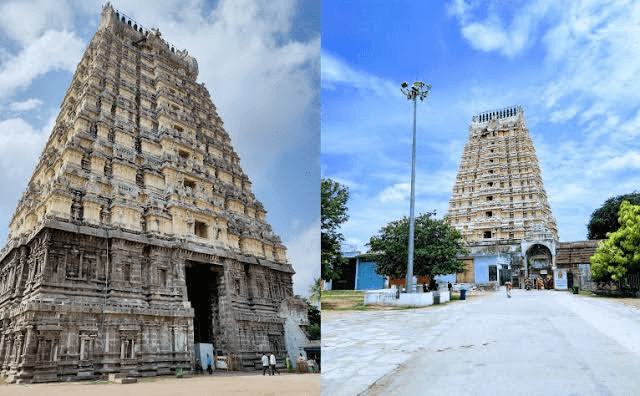
The Kamakshi Amman Temple is a significant historical treasure in Southern India, which is well-known for its rich cultural heritage. This temple of worship is home to the holy Goddess Kamakshi, who is thought to be an incarnation of Parvati, the Hindu goddess of love, fertility, and power. It is located in Kanchipuram, also known as the City of Temples. One of the 51 Shakti Peethas, holy sites constructed on the remains of Goddess Sati's fallen corpse from heaven, is the Kamakshi Amman temple. It is thought that the naval portion of her body dropped at this location, making it a sacred place. Shaktism is based on a Hindu religion that emphasizes Goddess worship. In the name Kamakshi, the letters 'Ka' and 'ma'stand in for Saraswati (the Goddess of knowledge and wisdom), 'akshi' stands for gracious eyes, and'ma' stands for Lakshmi (the Goddess of wealth and prosperity). These three Hindu deities, also known as Devis, together make up the holy trinity of the feminine transcendental force of the cosmos. The Tamil Hindu calendar considers the month of "Maasi," which often falls between February and March, to be auspicious for Lord Shiva's devotion. At this time of year, a festival is celebrated at the Kamakshi Amman shrine. In particular, the Goddess Kamakshi is brought out of the temple for a parade on the seventh day of this month while mounted on a silver chariot. With the same fervor, people also celebrate other significant holidays like Navratri, Rath Yatra, Sankara Jayanti, Aadi, and Aippasi Pooram. Even though the temple performs four ceremonial ceremonies each day, a visit in the early hours of Sunday would be best since it would allow one to glimpse the Goddess in her true, unadorned form known as Nija Swarupam. It is seen as a blessing and honor to see the deity as she is in her unadorned primordial form. At this time, a unique offering known as an abhishekam is made to the Goddess. On other days, it would be preferable to visit the temple early in the morning to avoid crowds and long lines. Chennai, the capital city of Tamil Nadu, is 75 kilometers away from Kanchipuram. To get from Chennai to the temple, one can hire a taxi or cab. The shrine is conveniently close to the city's bus and train terminals, and it may be reached by bicycle rickshaws, auto rickshaws, and city buses from its location about a kilometer south of them. 2. Kailasanathar Temple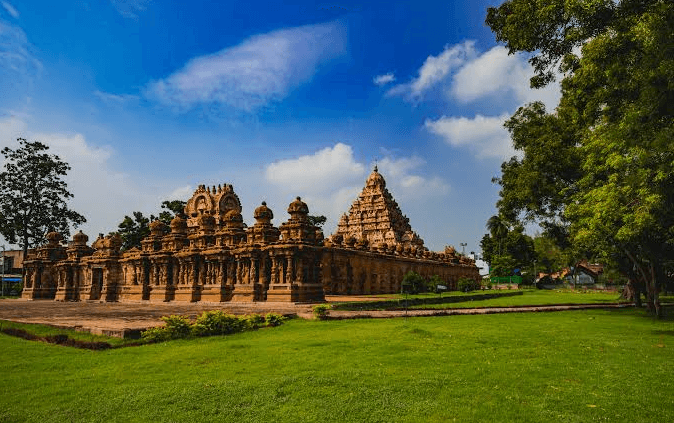
An important religious site, the Kanchi Kailasanathar Temple, is situated in Tamil Nadu's Kanchipuram city on the Vedavathi River's banks, facing east. The temple is frequented by many people throughout the year and is of significant importance and value to the Hindu faithful, but the period surrounding Mahashivratri sees a sharp increase in the number of visitors. Beautiful artwork and amazing sculptures adorn the Kanchi Kailasanathar temple. The Temple, which was constructed between 685 and 705 A.D., is the oldest temple of any kind in Tamil Nadu. The Pallava king Rajasimha began building this opulent edifice, and his son Mahendra Varma Pallava finished it. The temple's architecture is a superb illustration of Dravidian style architecture, and it is made of sandstone. This temple's architectural splendor stands out from all the others in Tamil Nadu in a striking way. At the main temple, the sixteen-sided Shiva lingam carved of black granite is a striking landmark. It is quite amazing to look at the Kanchi Kailasanathar Temple, which was constructed in ancient Dravidian architecture. Granite serves as the temple's structural support. The foundation's ability to support the enormous, gargantuan construction of the temple is due to the granite base. Sandstone makes up the entire outside construction and carvings. In total, the temple features fifty-eight little shrines that are carved out of niches in the wall that surrounds the main shrine. Goddess Parvati and Lord Shiva are carved in the main shrine in a variety of dance postures. In addition to these miniature shrines, the temple's interior also has the main hall, a lofty compound wall, and an entrance gate known as the gopuram. The most well-known holiday observed here is Maha Shivratri, which is observed annually on the fourteenth day and thirteenth night of the Hindu calendar's Magha month. Every day from 6:00 AM to 12:00 PM, and again from 4:00 PM to 7:00 PM, the temple is open. Each day, the Aarti is performed twice, once in the morning and once in the evening. When the Maha Shivratri festival is in full swing in February and March, it is the ideal time to visit the Kanchi Kailasanathar Temple. This is regarded as the most favorable time to visit the shrine. The temple is about 2.5 kilometres and 2.4 kilometers from the train station, respectively. If you're staying somewhere close to these two locations, you can hire a cab or a car to take you there. 3. Varadharaja Perumal Temple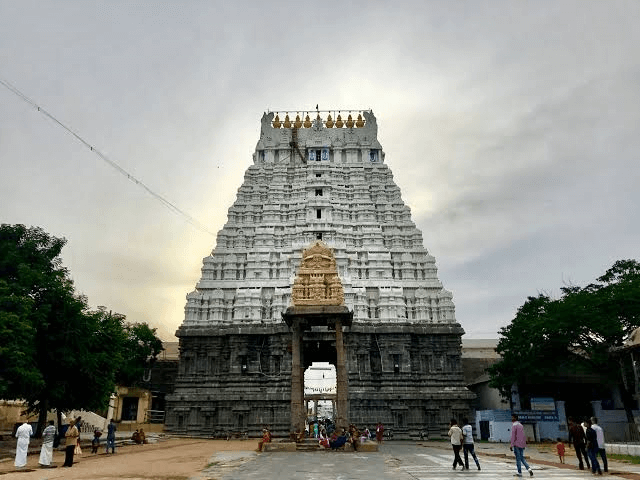
Lord Vishnu is honored at the Varadharaja Perumal Temple in Kanchipuram, Tamil Nadu. It holds a great deal of religious significance and is one of the 108 Divya Desams that is devoted to Lord Vishnu. It is also thought that the poet saints or the Alwars visited this temple. The enormous temple complex was created as a place of devotion during the rule of the Chola Kings. Therefore, it also has significant historical significance. Lord Vishnu devotees from all over the world travel to Vishnu Kanchi to pray at the temple, particularly during the 10-day Vaikasi Brahmmotsavam, Purattasi Navaratri, and Vaikunda Ekadasi festivals. Everyone will be impressed by the temple complex's spectacular grandeur and its beautiful embellishments. The Varadharaja Perumal Temple, Ekambareswarar Temple, and Kamakshi Amman Temple make up the triad of Mumurtivasam. Perumal Koil is another name for the temple, which is revered greatly in Vaishnavism. Visitors are welcome to tour the expansive temple complex, which includes 32 shrines and other structures designed in the style of old temples. A distinctive wooden statue of Lord Vishnu is housed in this temple. The idol is submerged in water and stored in a silver box. After the idol was completely submerged in water, according to the locals, the area saw good rainfall. The Vedanta Desika, Thirtha Prabandha Peyalvar, Bhoothathalvar, and various writings by Muthuswami and Tyagaraja Dikshitar in the 18th century all make mention of the temple and tales associated with it. A yajna was reportedly performed by Lord Brahma, Goddess Gayatri, and Goddess Savitri in Kanchipuram. He stayed away from Goddess Saraswati, who became enraged and manifested as the River Vegavati that flooded the area. Lord Brahma asked Lord Perumal for assistance because he was unable to manage the floods. While Lord Brahma completed the rites, Lord Perumal sat down on the ground across the river. Thirty-two shrines are included inside the 23-acre temple complex. The structure serves as a showcase for the Vishwakarma Sthapathis' historic temple building. The buildings have various inscriptions indicating the fair distribution of land, gifts, and sacrifices given to the deity during the time since they were constructed. There are seven precincts in the temple complex. The seven-tiered Rajagopuram at the main shrine is around 130 feet tall. The stone chain that was carved out of a single stone and the lizard carvings are two attractions that draw a lot of visitors. These lizards have a gold coating. The Vimana of Varadaraja Swami is also present in the sanctum. The deity's wooden statue is 40 feet tall, but the main granite idol is just 10 feet tall. There is a maha mandap with 100 pillars in the structure as well. The Ramayana and Mahabharata stories are carved into each of these pillars. The buildings also include mural paintings on the ceilings and walls. The finest times to visit Varadharaja Perumal Temple are in the mornings and evenings because those are when the regular rituals and aartis are conducted. For those who want to avoid crowds, the weekdays are the best alternative. Any area of Kanchipuram can readily approach the Varadharaja Perumal Temple. To get to the temple complex, visitors can either take a bus or rent a taxi or cab. To go to the Varadharaja Perumal Temple, tourists in private automobiles can take the Kanchipuram-Chengalpattu Road. 4. Ulagalantha Perumal Temple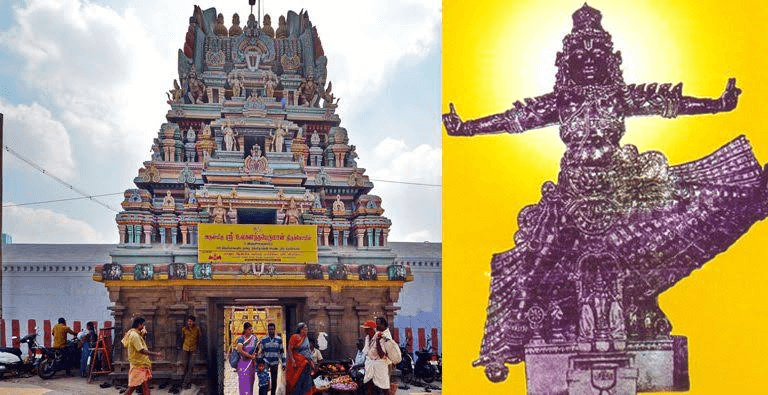
In the Tamil Nadu city of Kanchipuram, Ulagalanthar Perumal Temple, one of the 108 Divya Desams and devoted to Lord Vishnu, is situated quite close to the Kamakshi Amman Temple. The temple is highly significant both historically and religiously, and devotees from all over the world come here to worship. The Vamana idol, a representation of Lord Vishnu with one foot on Earth and the other in the clouds, is the deity of the temple. It is roughly 35 feet tall and 24 feet wide. According to popular belief, King Bali was propelled to Patala by the foot that pushed upward (the hell). The Trivikrama Shape is another name for the form of the Lord Vishnu idol. On the day of Amavasya, which is now observed as the festival of Deepavali or the celebration of Lord Vishnu's triumph, it is thought that Lord Vishnu used this form to overcome King Bali. In the temple, many Poojas are done. The Kaal Sarpa Dosha Pooja, also known as the Naga Dosha Pooja, is one of the most significant. Its proximity to the Kamakshi Amman Temple draws a sizable number of worshippers each day. Everyone visiting the city must enjoy the tranquil atmosphere of the premises, which is kept up to a very high standard by the temple management. Road access to Sri Ulagalantha Temple is available from all areas of Kanchipuram. To get to the temple, visitors can hail buses or use taxis. Drivers that want to explore the city independently can use Kamakshi Amman Sannidhi Street. This street leads to the temple. 5. Chitragupta Temple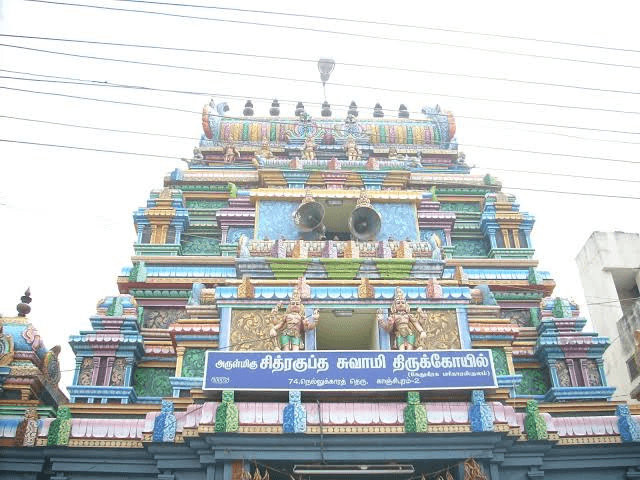
The Chitragupta Temple at Kanchipuram is devoted to the Hindu deity Chitragupta. It's unusual to find a temple in India devoted to Chitragupta, also known as Yamaraja's attendant and the god of death. Most of the temples in South India have this outstanding example of traditional architecture. It has a three-tiered Rajagopuram and a sanctum sanctorum. Hindu legend holds that Chitragupta, who was chosen to keep a record of both good and bad deeds committed by people on earth in order to uphold Dharma, was formed from a detailed picture created by Lord Shiva. As a result, he was given the names Chitragupta, Chitra (painting or picture), and Gupta (accountant). In the ninth century, the Chola Dynasty constructed a beautiful temple. Following the Chola Dynasty, a number of different kingdoms that controlled Kanchipuram took on additional renovation and extension projects. The Tamil Nadu Hindu Religious and Charitable Endowments department currently looks for the temple and markets it as a significant South Indian tourist destination. The sacred cow Kamadhenu is thought to have given birth to Chitragupta, who is also known as the Adi-devata of the planet Ketu. Lord Indra and Goddess Indrani are said to have raised Chitragupta. With a pen in his right hand and some papers in his left, Chitragupta's idol is seated. In terms of religion, the Chitragupta Temple is highly significant. Particularly during the annual Chitra Pournima festival, which is celebrated in April, devotees pour into this area in great numbers. Road access to the Chitragupta Temple is simple from any location inside Kanchipuram. The best way to get to the temple is through public transportation. Tourists can hail local buses that routinely travel throughout the town or hire taxis or cabs. Gandhi Road, Chengalpattu Road, and Vellore Road are the three routes that private vehicles can take to go to the temple. 6. Eri Katha Ramar Temple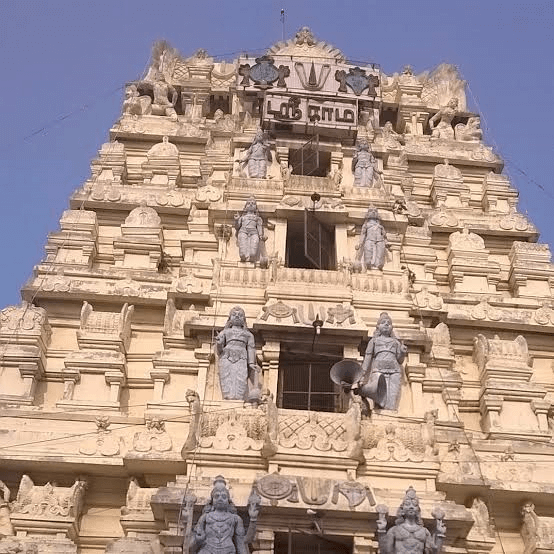
A temple to Lord Rama or Ramanuja may be seen in the lovely city of Kanchipuram. It is known as the Eri Katha Ramar Temple. For Lord Rama's worshippers and supporters, the temple is of utmost significance religiously. When the Pallava Kingdom was in power, it was constructed. Like many temples in south India, the temple complex includes traditional architecture. In close proximity to Lake Madhuranthakam, it faces east. An important draw to Kanchipuram is the approximately 8-foot-tall idol of Lord Ramanuja. It is thought that Thirumalisai Alvar attained enlightenment here, and Ramanuja studied the Pancha Samskara Mantram from his mentor, Peria Nambigal, there. Ramanuja represents the family man, or the Grihastha, in this temple alone, which is also unique. Ramanuja acquired Pancha Samskara in the sanctum's four-pillared hall. Rama Navami, which commemorates the birth of Lord Rama, Ani Bhrahmotsavam, which is held between July and August in the Tamil month of Aani, and Pancha Samskaram, which honors the sanctification of Ramanuja, are three occasions when devotees gather in great numbers. Any area of Kanchipuram can easily be reached by road to get to Eri Katha Ramar Temple. The temple is situated in the Madhurantakam municipality along the Chennai-Theni Highway. Travelers can use the NH 32 or the Kanchipuram-Chengalpattu route to take a bus, hire a car or taxi, or drive their own vehicle. 7. Jain Temple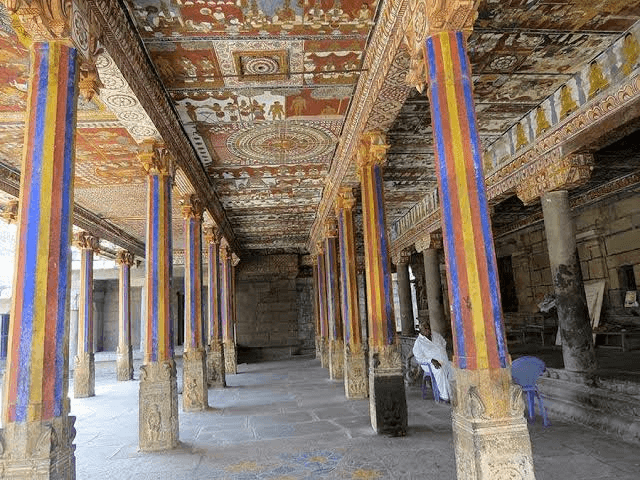
For Jain worshippers, the temples in Kanchipuram's Thiruparuthikundram village hold a great deal of religious significance. These temples each have a different deity: one is devoted to Bhagwan Mahavir, the other to Jain Tirthankaras. The temple's principal architectural style is Dravidian and dates to the ninth century. These historic temples are embellished with exquisite paintings that reflect the gods and myths of the Jain culture and art. The majority of these paintings have been restored, but the temples' beauty has been kept in excellent condition. One is guaranteed to become charmed by the fresco and mural paintings as one explores the architecture. This building draws visitors from all over the world, not just Jain followers but also admirers of art and architecture. The magnificent temple also has significant historical significance because it marks the time when Kanchipuram adopted Jainism as a way of life during the reign of the Pallava Kings, who were fervent adherents of the faith. The Department of Archaeology in Tamil Nadu looks after both of the temples, which are next to one another. Only a small portion of these historic structures are accessible to visitors due to the restricted portions' severe degradation. The temple honoring the Jain Tirthankaras is known as the Chandraprabha Temple, while the temple honoring Bhagwan Mahavir is known as the Jinaswamy Temple. The queen of Mahasen Raja, Queen Lakshmana, is said to have desired to drink a streak of the moon's light while she was expecting. The infant who was born to the Queen shone like the moon. Prince Chandraprabha was thus given to him. According to legend, the prince abandoned all of life's joys very early on and began teaching the public how to become enlightened. After fasting and meditating for nearly a month, he is reported to have gained nirvana as Sammetshikhar. 8. Thennangur Panduranga Temple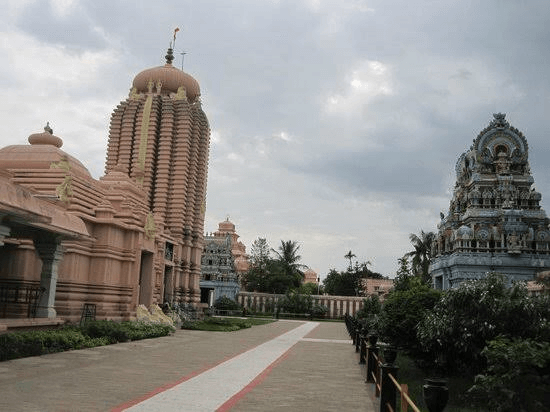
Thennangur Panduranga Temple is situated in the Tiruvannamalai district of Kanchipuram's Thennangur village. The town is also referred to as the Meenakshi goddess's birthplace. In honor of Panduranga and his wife Rukmayee, there is a temple called Thennangur Panduranga. Because of its religious significance, distinctive architecture, and the sacred idols of Lord Panduranga and Rukmayee, it draws travelers from all over the world. Swami Haridas Giri installed the temple's main deity, which he had brought from Pandharpur around 500 years earlier. A rare Indian discovery, the idol of Achyutraja Perumal, is also housed in the stunning temple. It's believed that the idol of Achyutraja Perumal is a rare find in India because no temple in the country houses one. The idols are magnificent and wonderfully attired with much fervor and zeal in vibrant clothing and lovely jewelry. Visual pleasure is the sight of exquisitely decorated idols. Many people are enthralled by the idols' brilliant beauty and experience not only the Almighty's blessings but also the enchanting ambiance of the temple. Every year in April, Hindus celebrate Vishukani Utsav, which is the start of the new year. At the temple, worshippers offer abhishekam and give prayers. It's a day for fresh starts and hopeful expectations. On Gokulashtami, the festival of Muthangi Sevai is observed. Lord Panduranga is depicted as Lord Krishna holding the Govardhan Hill, Parthasarathy, and Rajagopalan, and the divine idols are beautifully dressed and jeweled. Thennangur Panduranga Temple is best visited in the morning or the evening since most of the ceremonies and poojas take place then. Any area of Kanchipuram can easily go by road to the Thennangur Panduranga Temple. To get to the temple complex, tourists can hire cabs or taxis. Within the hamlet, local buses frequently run; tourists can choose to take a bus ride as well. The Kanchipuram-Vandavasi Road is available for use by travelers in private automobiles. 9. Prasanna Venkatesa Perumal Temple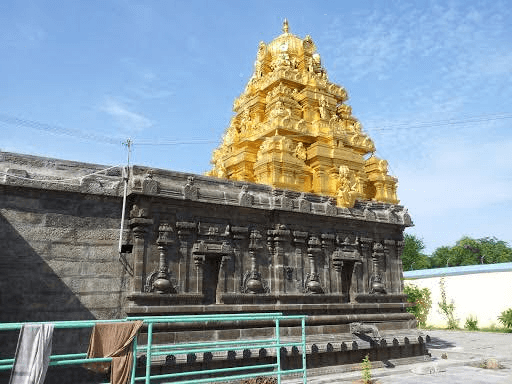
In the Kanchipuram neighborhood is the Prasanna Venkatesa Perumal temple, a place of worship for Lord Venkateswara. The Lord Venkateswara idol in this magnificent temple is unlike any other because it is depicted standing on a Shivalinga. The magnificent temple, which dates back roughly 500 years, is extremely significant to the Hindu community, particularly to devotees of Lord Perumal. This unique depiction shows that Lord Venkateswara/Perumal and Lord Shiva are on an equal footing and impart the same values and way of life to us in many ways. It is unheard of anyplace else in the world. The deity is said to be extremely strong and grants all requests made with sincerity. To appease Lord Perumal, devotees frequently recite Tulsi Archana, light clarified butter (ghee) lamps, and present flowers and garlands. Visitors frequently comment on how the temple has a peaceful, heavenly vibe that brings them closer to God. Particularly on Vaikunta Ekadasi, tourists swarm here in great numbers hoping to receive blessings from the Lord. This day, which falls in the Hindu month of Dhanu between the months of December and January every year, is marked by a lavish procession of Lord Perumal. From any location in Kanchipuram, Prasanna Venkatesa Perumal Temple is easily reachable by road. To get to the temple, visitors can choose to drive themselves or take a bus ride. Another option for getting to the attraction through SH 118A is taxis and cabs. 10. Vijayaraghava Perumal Temple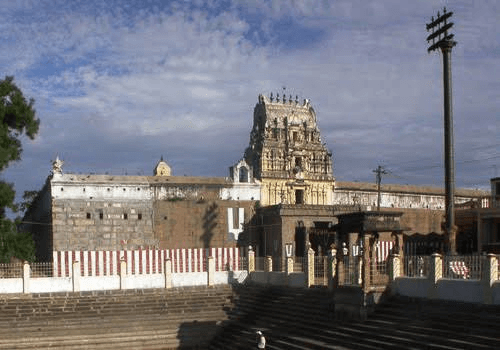
In the town of Kanchipuram, there is a temple called Vijayaraghava Perumal Temple that is devoted to Lord Vijayaraghava Perumal. The 57th of the 108 Divya Desams devoted to Lord Vishnu is this magnificent shrine. The Pandya kings were in power when it was constructed in the thirteenth century. Several inscriptions indicate the age in which the temple was built on its walls. The temples in Kanchipuram have a similar architectural style to this one. The major god, Vijayaraghava Perumal and Margathavalli Thayar, each have their own temples within the Vijayaraghava Perumal Temple complex. Vijayaraghava Perumal's idol may be found facing east, between Sridevi and Bhudevi. Jatayu can be seen resting off on his thigh. Additionally, visitors throng the temple to view the distinctive Kuthirai Vahanam, which rotates on its axis. The bulk of worshippers that come to the famed shrine are females who want to become pregnant. A tradition states that during Amavasya, roasted lentils are wrapped in a piece of fabric, soaked in water, and fastened to the woman's lap. If the lentils grow, the mother is likely to give birth to a kid soon. Kanchipuram's Vijayaraghava Perumal Temple is conveniently located near the highway. To get to the temple complex, visitors can either take a bus or hire a taxi or cab. Self-driven car owners have the option of using Salai Street or Gandhi Road to get to the temple.
Next TopicAyodhya Temple
|
 For Videos Join Our Youtube Channel: Join Now
For Videos Join Our Youtube Channel: Join Now
Feedback
- Send your Feedback to [email protected]
Help Others, Please Share










